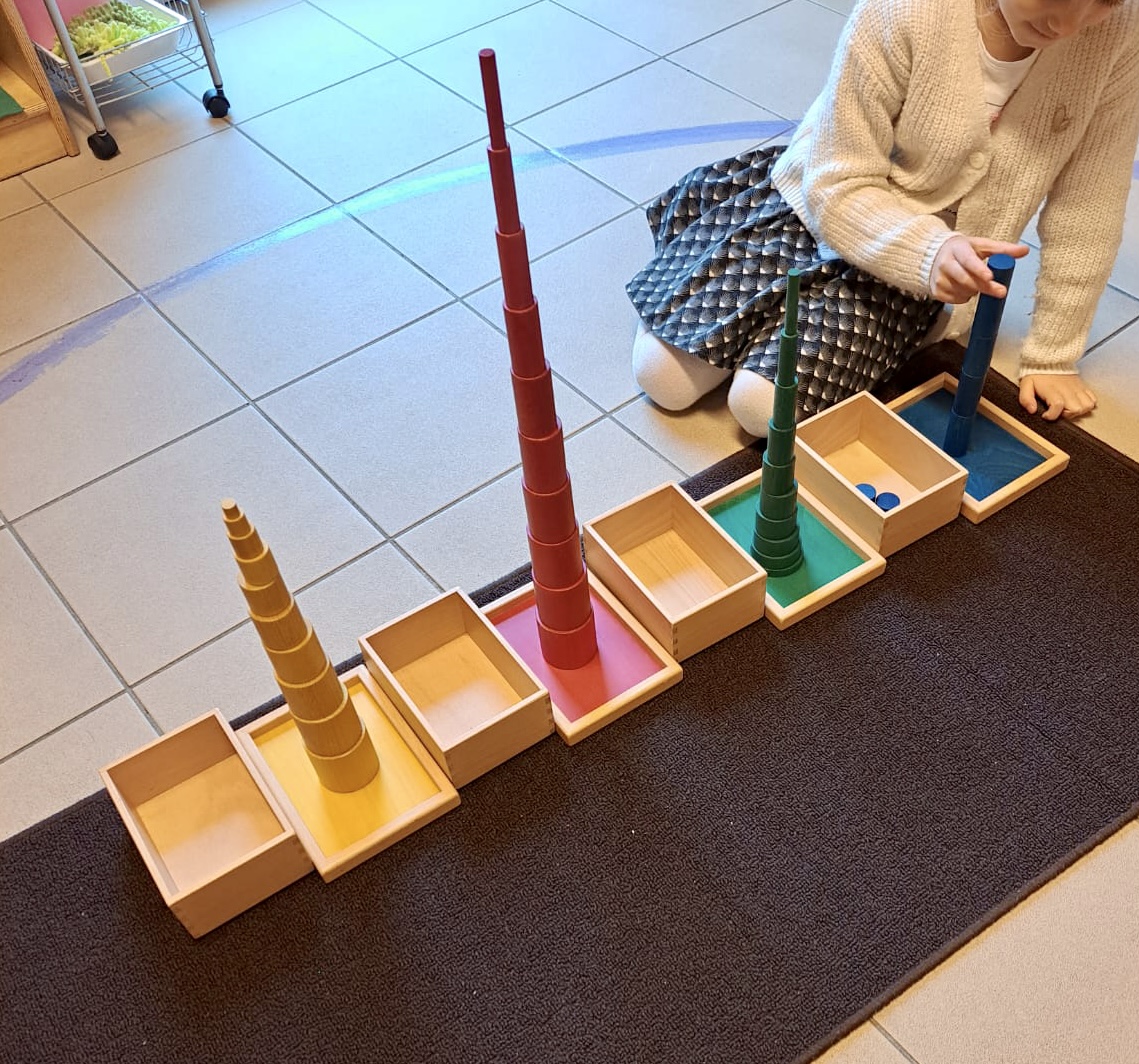
Il metodo Montessori
Secondo il Metodo Montessori l’educazione è un aiuto alla vita, un’insieme di fattori che favoriscono la crescita con l’obbiettivo del raggiungimento dell’autonomia, che è un presupposto indispensabile per il rispetto di sé e degli altri.
Nel suo lavoro di scienziata, Maria Montessori parte dalla scoperta del bambino, dei suoi bisogni e delle sue immense potenzialità.
È il bambino la fonte del Metodo:
“… io non ho fatto altro che studiare il bambino, e ricevere ed esprimere ciò che egli mi ha dato, e che viene chiamato il Metodo Montessori. Tutt’al più io sono l’interprete del bambino …”.
Proprio lo studio del bambino e delle diverse sensibilità che egli sviluppa naturalmente durante la sua crescita, costituiscono la “leva” del Metodo: lo sviluppo psichico del bambino è principalmente autorganizzazione e non è casuale.
Gli stimoli diventano importanti per la presenza di guide interiori, e quindi si deve favorire e aiutare nel bambino uno sviluppo che lui stesso per natura è portato a promuovere.
Il progetto educativo
Il progetto educativo di Maria Montessori consiste in un processo di autoeducazione personalizzato che permette al bambino di crescere attivo, sereno, disciplinato e fiducioso in se stesso: egli si muove, osserva, esplora l’ambiente, sceglie le esperienze che più rispondono ai suoi bisogni profondi, traendone appagamento e soddisfazione in un clima di attiva concentrazione: nel Metodo Formativo Montessori sono stati creati appositi materiali che accompagnano il bambino nei processi di apprendimento.
I bambini si autoeducano, sotto la direzione della maestra, a imparare e a comportarsi: fruiscono della libertà all’interno di un sistema di regole che governano la convivenza civile, facendo propri i valori di rispetto reciproco e dell’ambiente.
L’apprendimento è attivo e autodeterminato e quando il bambino ha interiorizzato e astratto i contenuti di un certo materiale, spontaneamente lo abbandonerà per passare a uno di livello superiore.
Da questa modalità i bambini traggono la capacità di auto valutare il proprio percorso di apprendimento e di intervenire attivamente nella sua determinazione.
Con il Metodo Montessori si arriva a una sintesi nel rapporto tra libertà e autorità: l’educazione alla libera scelta viene integrata con una “pedagogia del limite”, che è necessaria, oggi come ieri, a ogni livello, compreso quello sociale.
I bambini montessoriani sono felici di andare a scuola e si distinguono per l’entusiasmo che li anima nell’apprendere, anche fuori dall’ambiente scolastico, e che li accompagnerà per tutta la vita.

